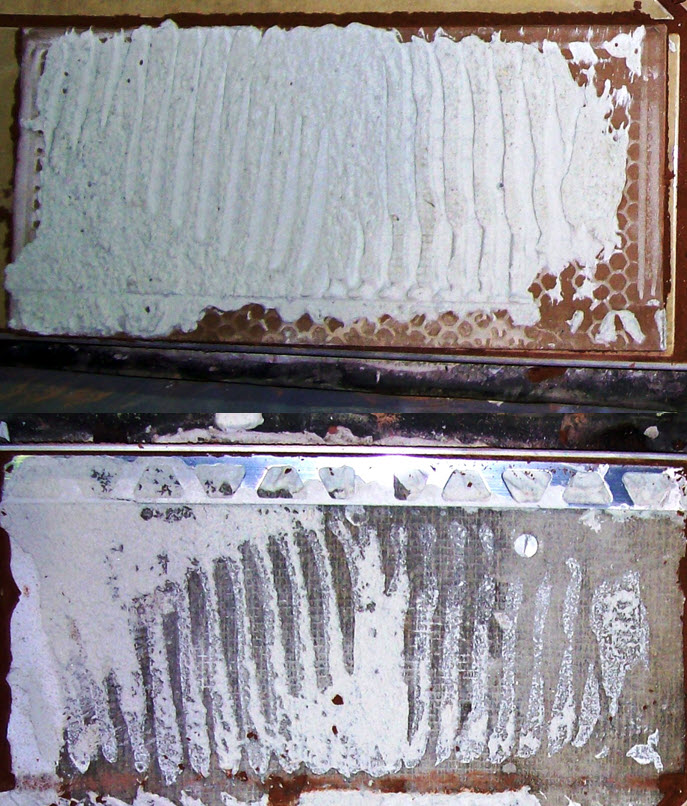
Do you use an edge profile to protect your tile installation? It's particularly valuable when transitioning from tile to another flooring surface material. However, to work, the profile must be installed correctly. Let's explore.
Profiles Protect Tile Edges
When stopping the tile installation adjacent to another floor finish such as carpet or hardwood, quality oriented tile installers consider how to protect the edge of the tile, whether a full tile or a cut edge. It's important because, otherwise, damage can ensue to the tile.
>> See Three Lippage Hazards to Avoid
To prevent this, many manufacturers produce various trim shapes (profiles) that not only protect the tile edge; they also create a smooth transition to the adjoining flooring product.
For example, Profilitec explains,
"The profiles for floors solve different situations: differences in height between new and old coverings, connection between surfaces of the same height with the same or different materials, edge ends, or decorate the room with a simple aesthetic function."
Schluter says,
"Tiled floors are elegant, easy to maintain, and unlike carpets, do not harbor common allergens and dust mites. Transitions from a tiled floor to other surfaces need to be protected, and floor profiles are designed to ensure a smooth transition, while preventing tile edges from chipping and cracking. Schluter®-Systems offers a vast selection of floor profiles that protect tile edges between floor coverings at both equal and lower elevations."
The "L" Angle Edge Profile
One of the more commonly used profiles is the “L” angle which is available in a variety of colors and finishes to compliment almost any decorating theme.
The horizontal leg is embedded under the tile in thinbed mortar while the vertical face of the angle shields the tile edge from potential damage which can be caused by other flooring product installers, foot traffic or objects moving across the transition.
These edge treatments allow for grout to be installed between the profile and the tile yielding a neat and professional appearance.

How to Correctly Install the "L" Edge Profile
The functionality and appearance of these edge treatments serve a great purpose, but they only do so if they are installed correctly. Unfortunately, many installers have not been properly trained in the right way to install these profiles.
More specifically, if there isn't enough mortar on top of the profile to support the tile as shown in the image above, the tile has a good possibility of cracking.
1. Embed the Edge Profile in the Thinbed Mortar
As stated above, the profile is to be “embedded” in the thinbed mortar. This means there must be mortar both below and above the strip.
2. Trowel the Mortar in One Direction
After keying the thinset into the wood or concrete surface, trowel the mortar in one direction. Place the strip into the mortar and press it into place.
3. Apply Additional Mortar
At this point, additional mortar must be applied in one of two ways.
- Either apply additional mortar with the notched side of the trowel in the same direction as previously spread mortar on top of the profile
- Or back butter the edge of the tile.
4. Collapse the Ridges
The tile is then moved perpendicularly (back and forth) to the direction of the mortar to collapse the ridges thereby yielding full coverage.
>> See How to Correctly Trowel Mortar When Installing Tile?
Shortcuts with Edge Profiles Won't Protect Your Tile Installation
Installing these profiles correctly will provide a long lasting tile job, but taking short cuts will most likely result in failure.
Quality oriented tile installers who work hard to produce a finished tile installation that is both pleasing to the eye and functional want to protect their work. To accomplish this task, the installer must have the hand skills necessary to complete the work correctly the first time using the best quality materials available, and a commitment not to take shortcuts.
How Do You Use Edge Profiles in Your Tile Installations?
What's your take on protecting your tile installations? What role have edge profiles played and what advice would you add to this article?
Let us know in the comments below.
And, if you aren't yet one, consider becoming a Certified Tile Installer,
Thanks for reading.

